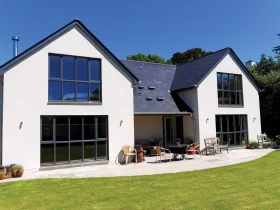
Learn from the experts with our online training course!
Use the code BUILD for 20% off
Learn from the experts with our online training course!
Use the code BUILD for 20% offA budget smart home can achieve most of what a more expansive system can, just on a simpler scale. Automating functions such as lighting, heating and security can mean spending less time adjusting appliances and more time enjoying your home, so it should always be considered.
It is often thought that smart home technology will make a big dent in your balance, but these subtle improvements can make a useful difference in your daily life, and they don’t have to be expensive.
It might start with a £20 app-controlled or motion sensor light bulb, for example. Others may stretch their smart home system into a six figure feature where everything is centrally controlled, from security to media streaming, but sometimes its the smaller differences that help the most.
Smart products are a great way to make the most out of your home to further enjoy time with family whilst building a safer environment. Although, it can be difficult to know where to start, especially when your budget is limited and so many products on the market. Here we discuss how to create the perfect smart home that works for you and your wallet, from smart speakers to smart rooms.
For smaller budgets, or if a renovation project doesn’t involve extensive electrical works, wireless and pluggable consumer products can be a great option.
“These are designed to enhance the efficiency of your home, saving time and energy while enabling you to set scenarios for your daily routines,” says Katrina Mills, smart home buyer at John Lewis & Partners.
Some standout products and beginner essentials include the Google Nest Hub Hands-Free Smart Speaker with 7″ Screen (£49.99), or Amazon Echo Dot Smart Speaker with Alexa Voice Recognition & Control, with Philips Hue White E27 Bulb (£37.99) – both are perfect for smart home beginners.
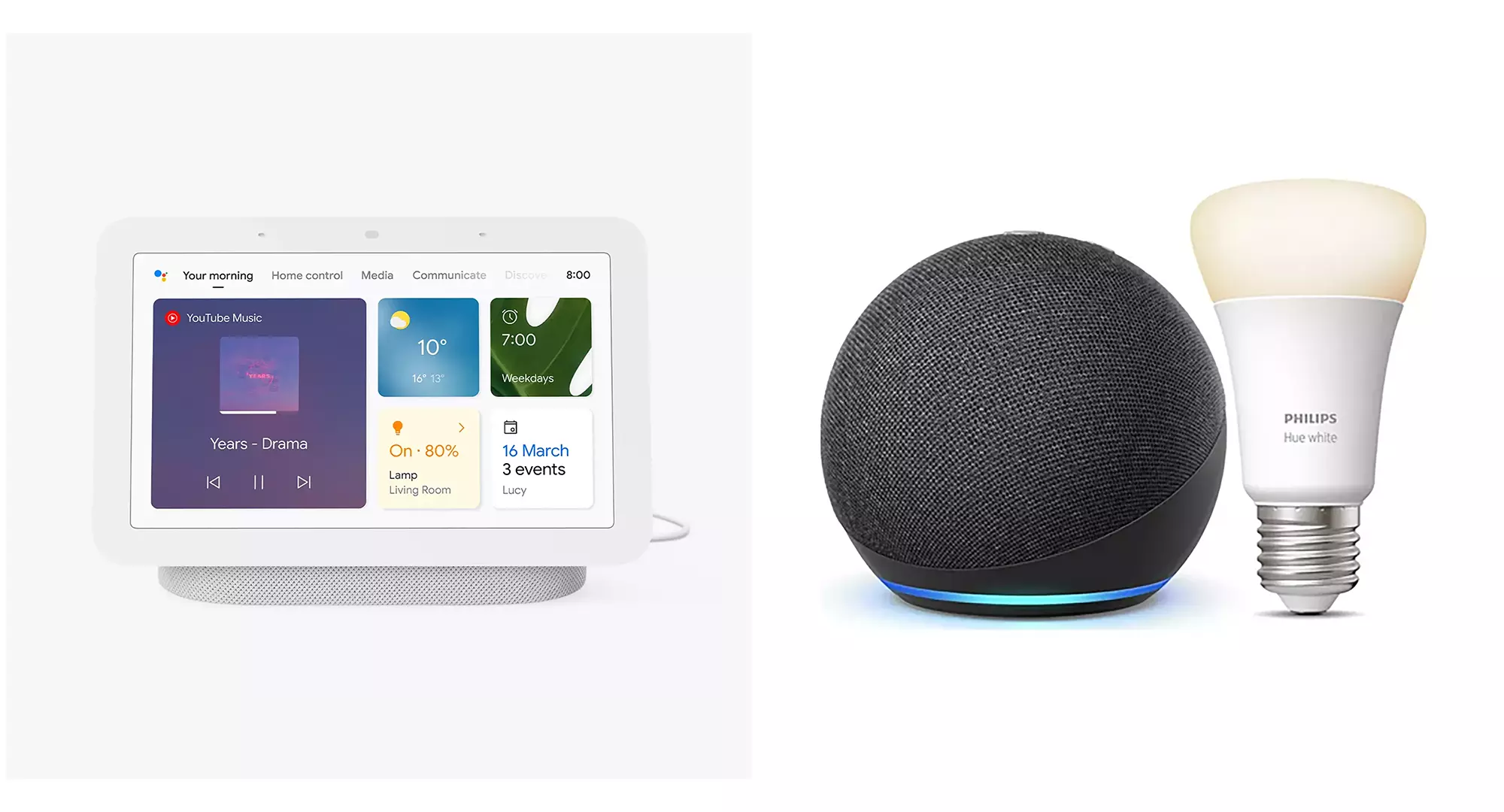
Google Nest Hub Hands-Free Smart Speaker (£49.99), Amazon Echo Dot with Philips Hue White E27 Bulb (£37.99), John Lewis
Products such as these can make your life just that little bit easier, helping you with reminders, weather updates or finding the perfect music. What’s more though, is that these items can facilitate so many other smart home options and 10,000 additional devices, from Philips Hue lightbulbs that have alarms, timers and alerts to a Nest Hello video doorbell.
The more mundane functions of smart products can be ideal for those just starting out. However, the products that can really help often control built in elements of the house, such as the thermostat or security features.
The Nest or Alexa can be used as a base device, and connected to items such as the Hive Active thermostat (£179) and SmarTap bathroom controller (from £109) so you can ask the heating and shower to be turned on before you enter the bathroom, for instance.
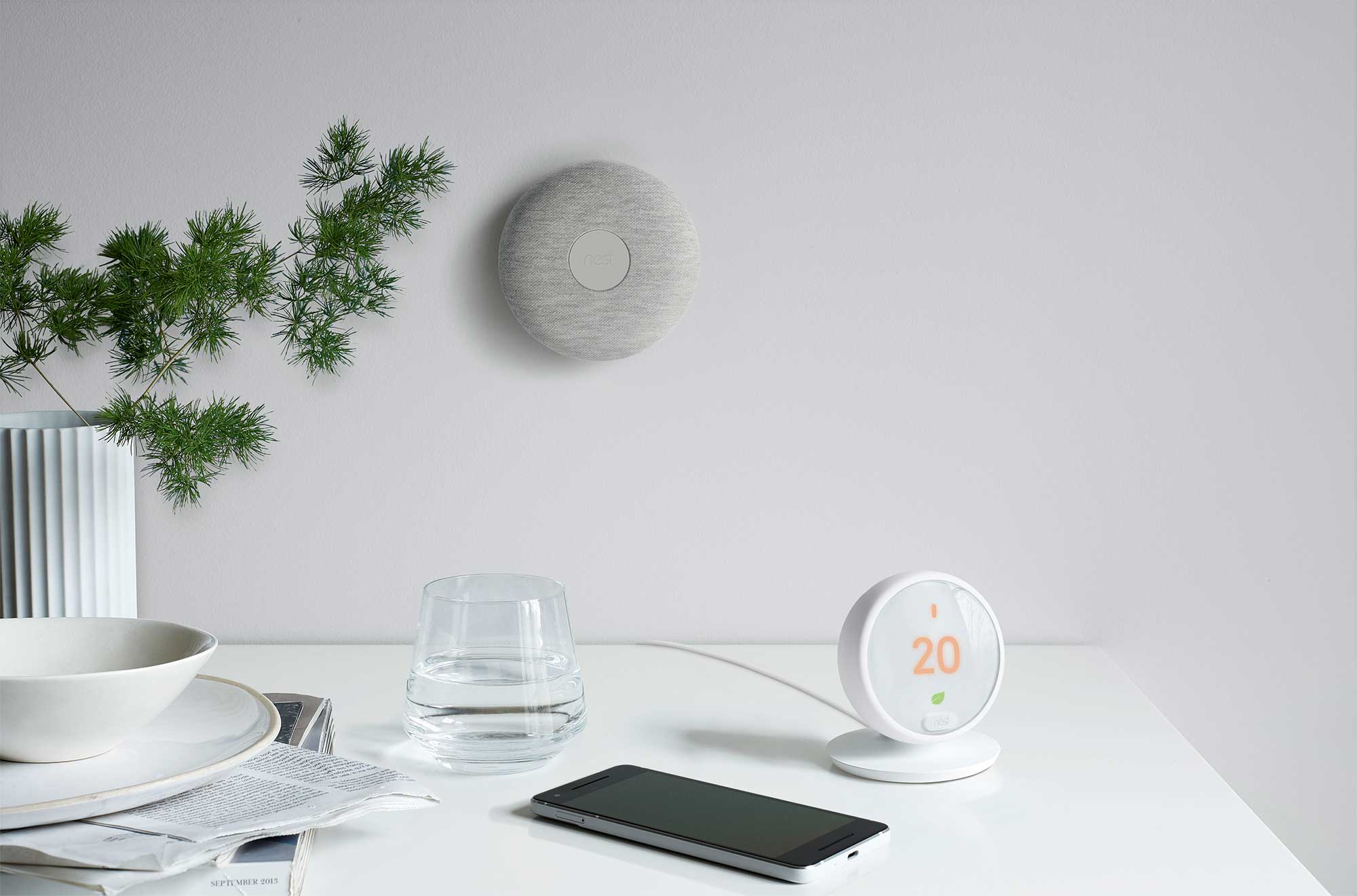
Nest’s Smart Thermostat E is compatible with Google Home, but not Amazon Alexa or Apple HomeKit, £143.99, Argos.
Features such as these can have important benefits for families, as smart thermostats can encourage you to monitor heating usage in line with utility bills.
Katrina’s advice on an entry-level setup is to “start with lighting, heating and home security, as these tend to be the most beneficial categories in a smart home. There are enough products out there to see tangible results.”
You don’t have to do it all at once, either. “You can add new elements as and when you’re ready, allowing you to get to grips with each product as you go,” she says.
Niko’s Smart Lighting Controls can operate multiple rooms lighting from a single button press, and can be set from wall control switches as well as smart phones or tablets. They can also be automated to turn on when you are out to give the impression you’re still at home, for security purposes.
The appeal that smart home control can bring to a property is ever expanding, and some package house builders have teamed up with technology companies to enhance your experience in the finished property: Weberhaus works with Apple HomeKit, for example.
Developers are following suit, seeing the added value that smart homes bring for buyers. Swedish firm Trivselhus made its Sommar Place development in Milton Keynes more intelligent thanks to Apple HomeKit: the setup’s HomePod interactive speakers can control lighting, heating, window blinds, security, AV and domestic appliances.
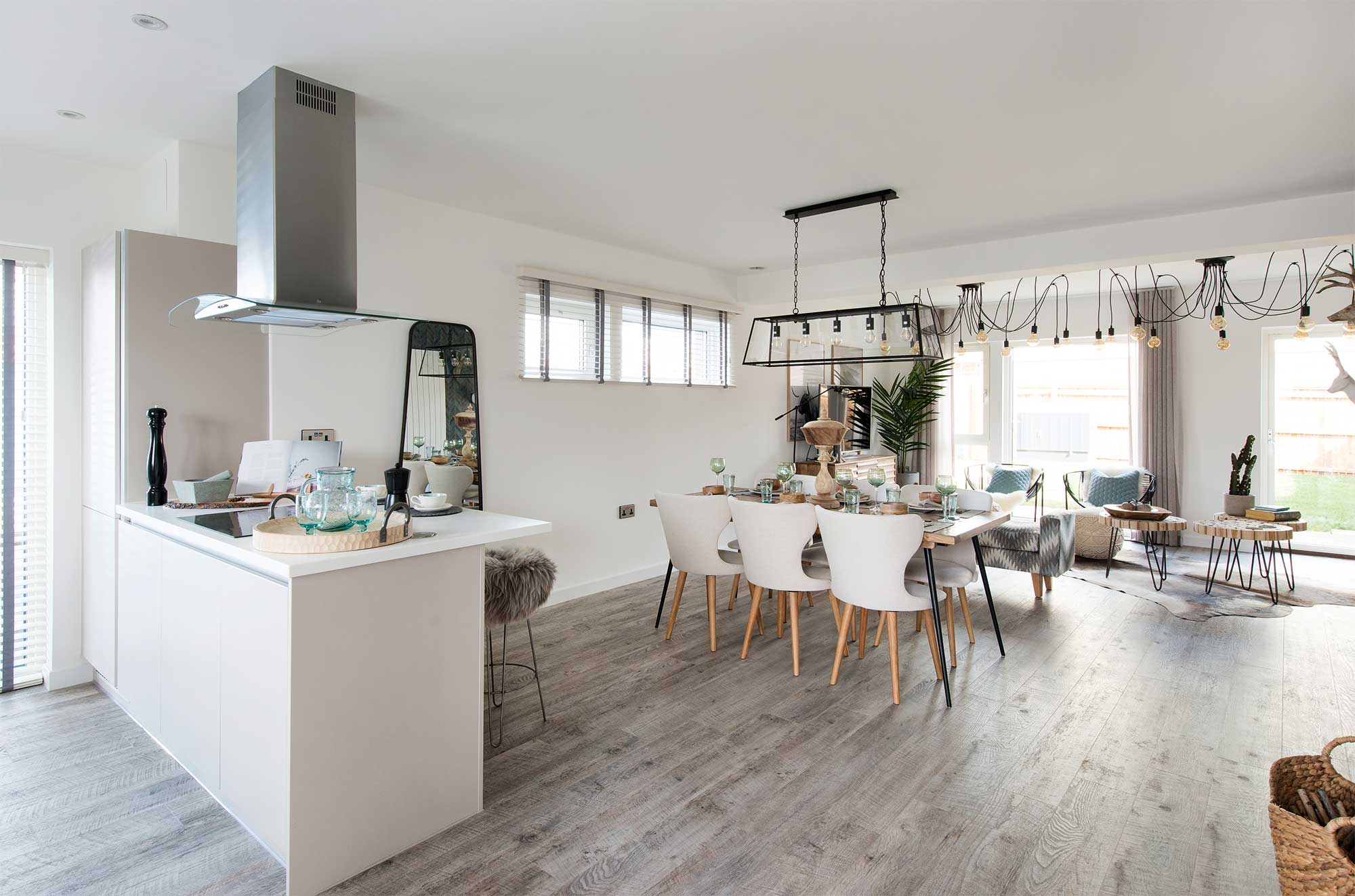
Trivselhus worked with interior design firm New i.d to install Apple HomeKit-compatible products in its Sommar Place development
If you are self building or undertaking a substantial renovation, it could be a wasted opportunity to rely only on plug-and-play and WiFi-enabled products.
If you’re wiring a home from scratch, the benefits of an integrated system are compelling and definitely worth considering whilst you have the chance.
“The important thing is making sure the cabling is done in a way that allows you to be flexible. If everything is star-wired back to a central position, that’ll give you the ability to do anything with the infrastructure in the future,” says Andy Mack, director of Cyberhomes.
This configuration means every cable runs back to a central hub, which can control features individually, from heating valves to ceiling lights.
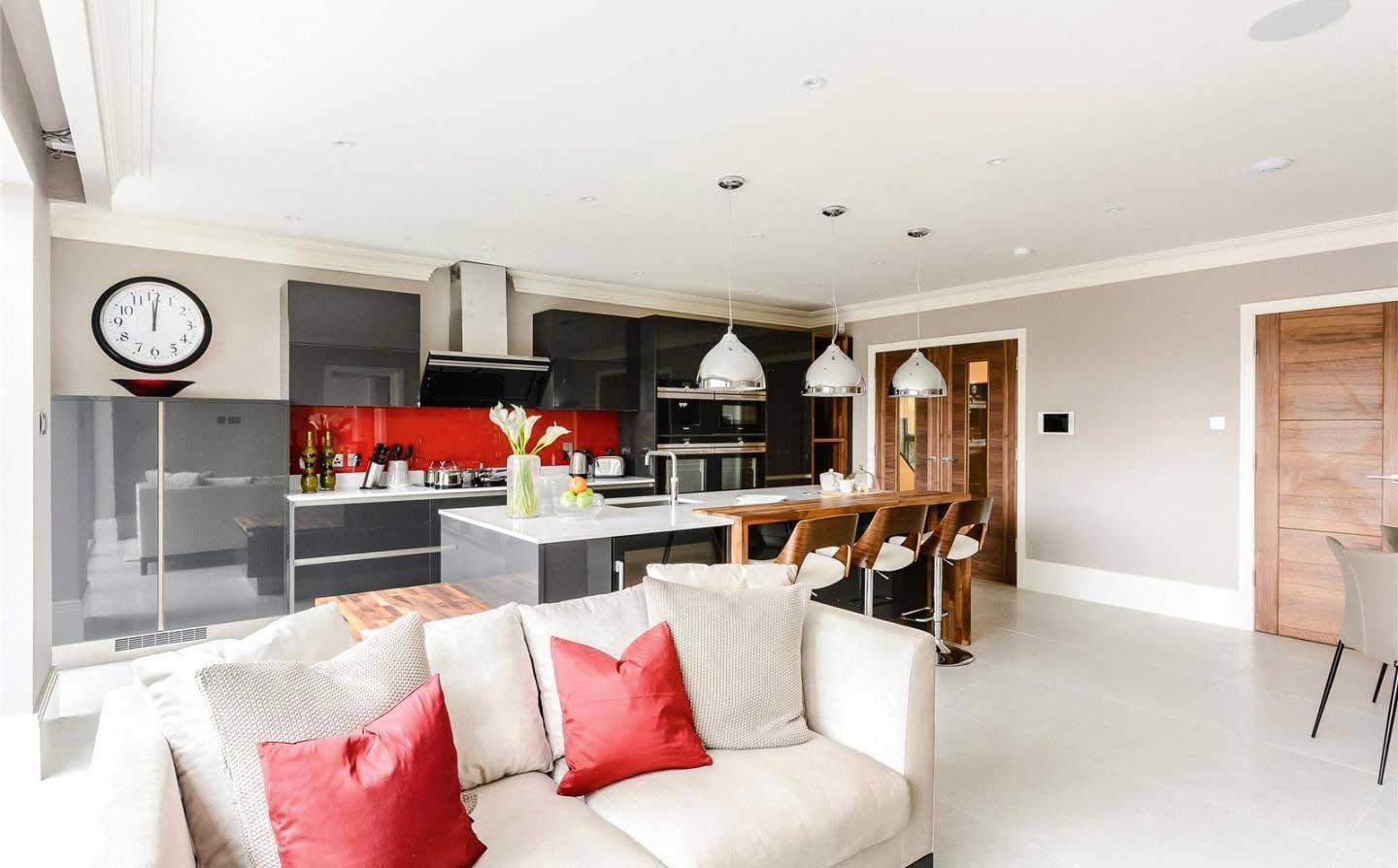
One of Moss Technical’s projects, using a Niko system to enable full control of the home’s functions
It can also group elements together – so, when you leave the house, a single button will talk to the control hub, which decides to turn down the thermostat, close the curtains and put the lights on security simulation mode.
Cabling a new house is relatively cheap: the cost of a smart home springs more from controllers, modules and hardware such as audio-visual equipment.
So, install your infrastructure with expansion in mind. “If, for example, you’d like in-ceiling speakers but can’t afford it, pull in a cable now, mark on the drawings where it is, and at a later date you can cut a hole and the cable’s there ready for it,” says Andy Moss, managing director of Moss Technical.
Need expert advice on smart home tech options?Talk to industry experts about your plans and learn from their years of experience at Build It Live. Watch live presentations on a variety of self build and renovation topics, browse thousands of home technology products and get your specific questions answered. Build It Live takes place three times a year in Kent, Oxfordshire and Exeter. The next show will be on 22nd and 23rd February 2025 in Maidstone, Kent. Claim a pair of free tickets today and start planning your visit. |
If you are self building and aiming to have your whole home turned into a smart hub, then it’s important to consider where you will get the most out of your investment. If the quote from a technology specialist comes back and it’s outside of your budget, where can you do a bit of value engineering?
“Think carefully about the key rooms,” says Cyberhomes’ Andy Mack. “Do you really need full lighting and control in a secondary bedroom? Breaking it down so it doesn’t serve as many areas can have a big impact on costs.”
Andy Moss says that self builders sometimes decide just to service the ground floor, where there’s often a more concentrated need for smart tech (for example to integrate entry systems, lighting and blind controls, run underfloor heating systems or make the most of a media room).
Matt Nimmons, managing director of CEDIA EMEA, suggests examining what best fits your lifestyle.
“If you love watching movies or sport but don’t get a chance to go out to the cinema or to live sporting events, a home entertainment setup is a great investment and will give you a huge amount of pleasure over a number of years,” Matt says. “If you travel a lot for work or relaxation, then having the ability to manage the house remotely and access its security features may be more important to you.”
These two options show the difference in price range and what you are often able to get out of your budget. The Yale Sync Home Security System 9 Piece Kit (£349.99) or the TP-Link Tapo C200 1080P Wi-Fi Smart Indoor Security Camera from Argos (£34.99), can both bring great benefits to your feeling of security in place of a fully integrated system.
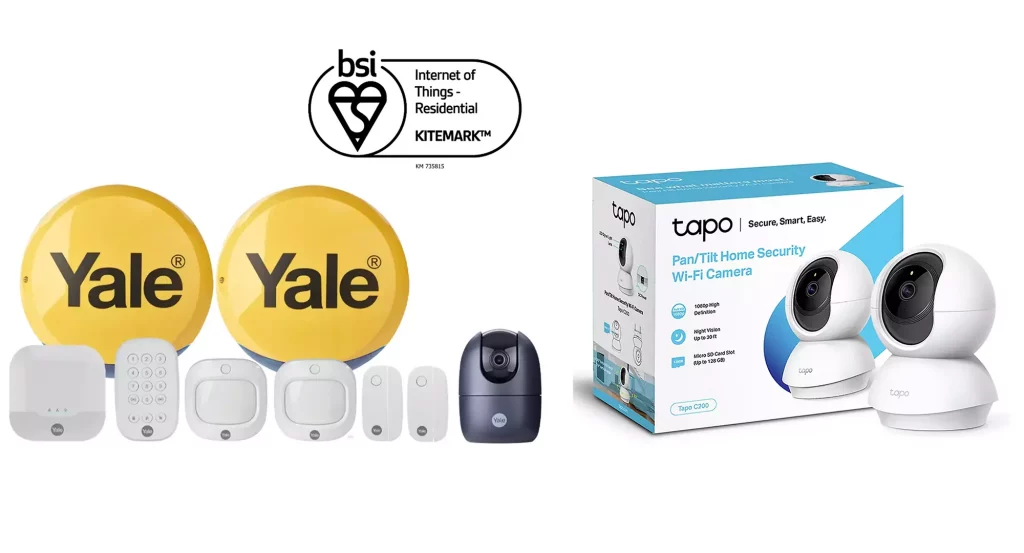
Yale Sync Home Security System 9 Piece Kit (£349.99) and TP-Link Tapo Wi-Fi Smart Indoor Security Camera (£34.99)
Home technology specialists can be a little shy talking about costs in general terms because there are so many variables: “The only way to come up with a realistic budget is to get a design on the table and to understand the benefits of what it can do for you,” says Andy Moss.
Getting the installation right is vital to achieving good value for money – so be sure you’re getting the best service.
For instance, Moss Technical is able to work with your electrician on the design and fit, or suggest its own installers who are highly experienced in the Niko solution it offers.
Check out ongoing maintenance and servicing costs, too – these can be worth every penny, but it’s important to understand what you’re getting.
An exciting example of how this has been achieved is in the renovation of this 1950s bungalow, now an ultra-efficient and high tech family home.
This stunning property, that won the Best Eco Home gong at the Build It Awards 2018, is an energy-efficient and modern smart home – including ceiling speakers for immersive music experiences and automated window blinds.
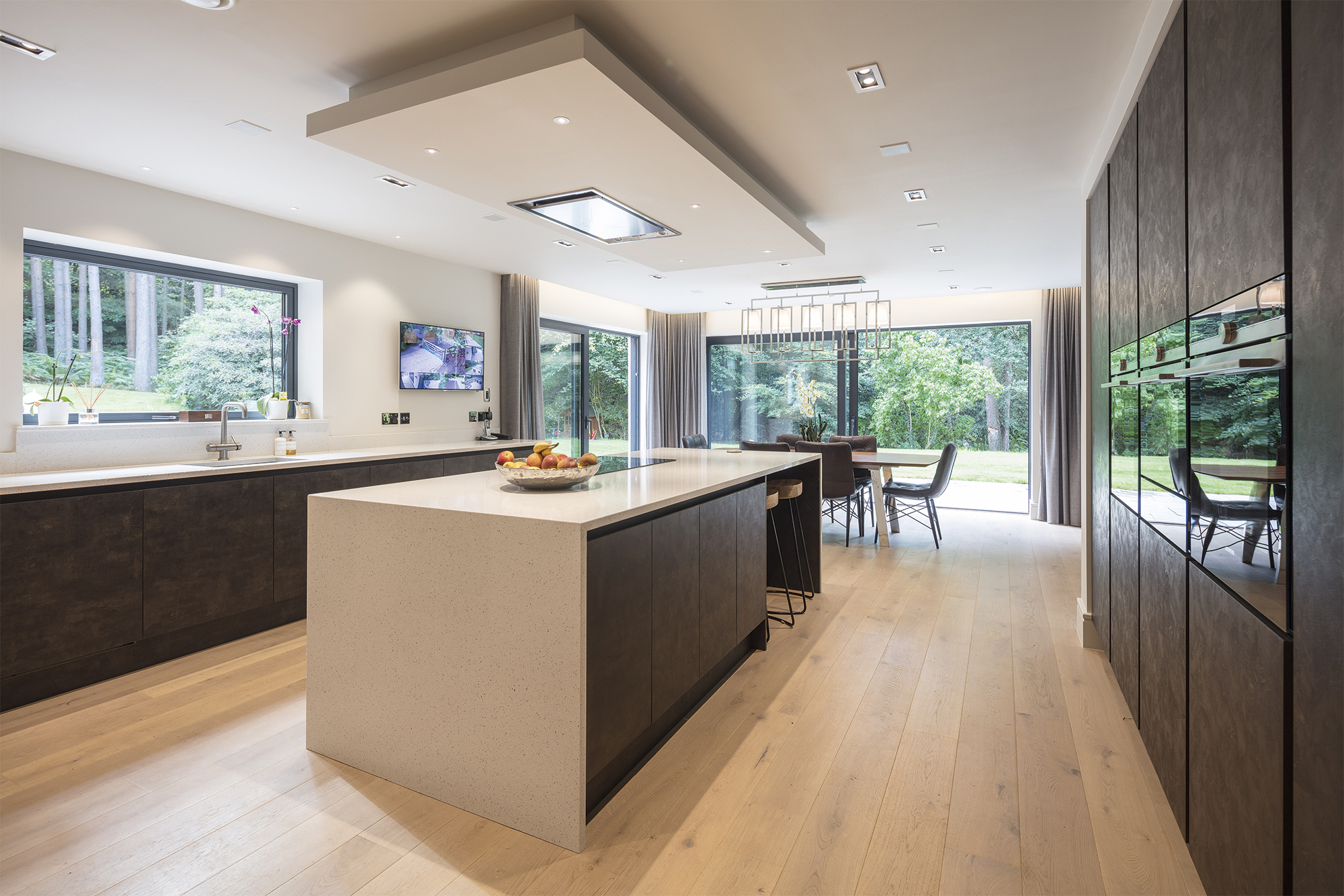
A morning button turns on the TV in the playroom and the radio on in the kitchen
“It is very difficult to provide a guide to exact costs, as it will depend on a wide range of factors, such as the size and layout of the property and the quality and quantity of the equipment installed,” says Matt Nimmons, managing director of CEDIA EMEA, the trade body for home automation (and a starting point for finding an installer).
Here’s Matt’s guide to what you can achieve on different budgets:Smart home tech for £15,000 A distributed or multi-room audio system and a flat screen, and a basic wired and wireless data network. Remember that the number of rooms will affect the budget. Installing lots of screens will also quickly add cost. At this level you may decide to invest the money instead on high-quality sound and vision for just one room to create a home cinema: this budget will get you a good setup in a medium-sized zone. Smart home tech for £50,000 Distributed audio and video, flat screens, automatically controlled mood lighting in some rooms, and a comprehensive wired and wireless data network. The amount and quality of the equipment will make a difference. Some people want large screens in every room, others would rather spend money on better quality audio. Again, you may decide that you would prefer simpler systems in the rest of the house, and then allocate a chunk of the budget to a home cinema. If security, CCTV, integrated door entry and control of heating and ventilation are important, you may prefer to put your money into these areas instead. Smart home tech for £90,000 At this level you can expect higher quality equipment and better control systems throughout the house. Touch panels in each room will allow you to have just one integrated control setup for your lighting, entertainment and heating. Smart home tech for £150,000 As above, with more touch panels, a better home cinema and more comprehensive systems. This kind of budget will provide a fabulous setup in a family home, but may not go so far in a 20-bedroom castle. |
Find everything from energy-saving heating and lighting controls through to multi-room audio, smart home security and more.
